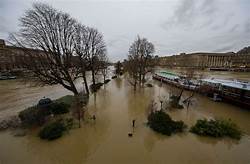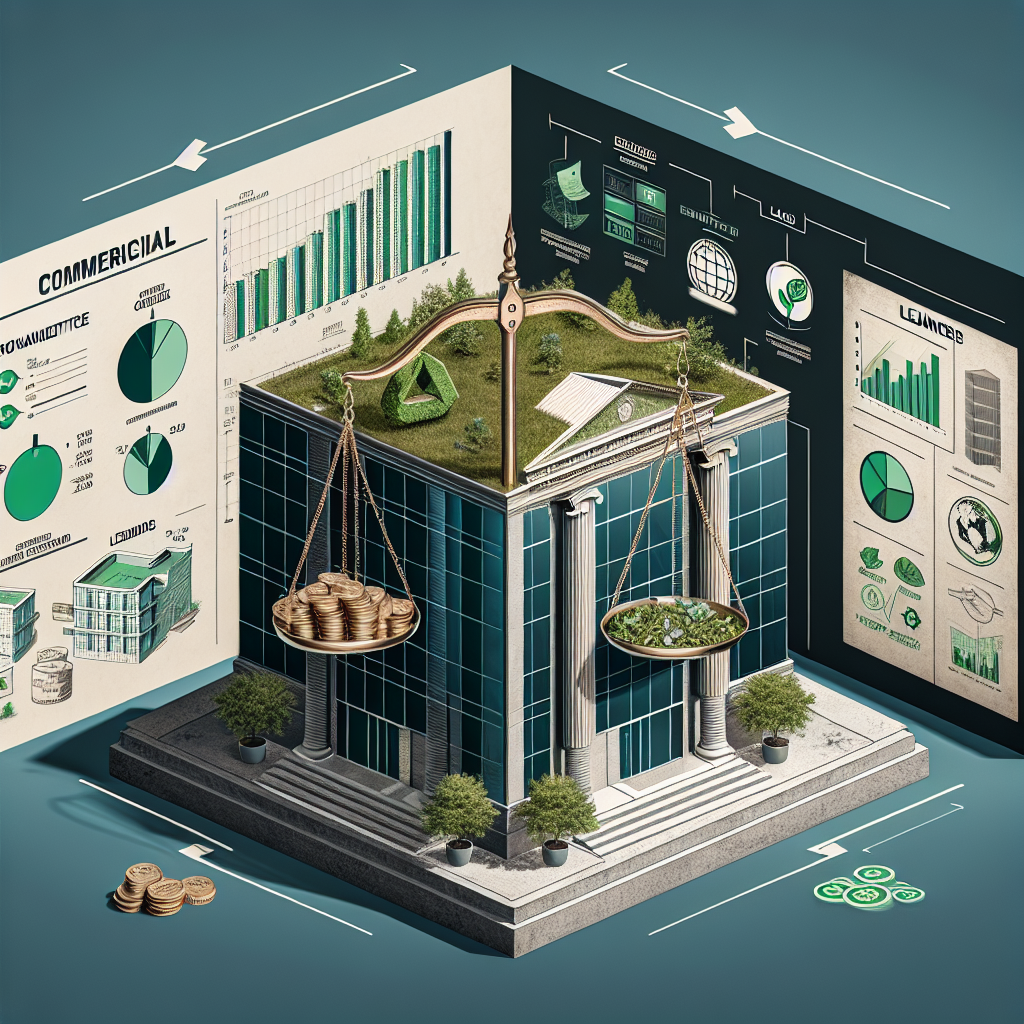-
 Navigating the Shifting Landscape of Commercial Lending Explore the evolving trends in commercial lending, including the integration of technology, impacts of interest rate changes, and the rise of ESG considerations.
Navigating the Shifting Landscape of Commercial Lending Explore the evolving trends in commercial lending, including the integration of technology, impacts of interest rate changes, and the rise of ESG considerations.
Natural Disaster Activity Was Above Average Last Year, Notes Corelogic
- Thursday, 17 January 2019
- Lending

Last year was an above-average year for hurricanes, flooding, wildfires and severe winds, according to the Natural Hazard Report from Corelogic.
“In 2018, the U.S. continued to experience damaging weather and natural catastrophes in high exposure areas, and in some instances, in regions that had been impacted in less than a year prior,” said Howard Botts, chief scientist at CoreLogic. “Hazards will always pose a real threat to homes and businesses and knowing exactly what that risk entails is critical to helping ensure sufficient protection from the financial catastrophes that so often follow natural disasters.”
Highlights from the report include the following:
Flooding
- In 2018, there were over 1,600 significant flood events that occurred in the U.S., 59 percent of which were flash flood related.
- Residential and commercial flood damage in North Carolina, South Carolina and Virginia from Hurricane Florence is cost an estimated $19 billion to $28.5 billion, with around 85 percent of residential flood losses uninsured.
- Multiple states, including Texas, North and South Carolina, Maryland and Wisconsin, experienced 1,000-year floods; several of 2018’s floods occurred less than two years after the same areas’ previous 1,000-year flood events.
- Six percent of properties nationwide are within Special Flood Hazard Areas, and around one-third of those have flood insurance policies.
Atlantic Hurricanes
- The 2018 Atlantic Hurricane season experienced 15 named storms, eight of which were named hurricanes. Two of these, Hurricanes Florence (Category 1) and Michael (Category 4), made landfall along the U.S. This made 2018 the third back-to-back season of above-average hurricane activity in the Atlantic.
- Around 700,000 residential and commercial properties experienced catastrophic flooding and wind damage from Hurricane Florence, where it is estimated to have caused between $20 to $30 billion in insured and uninsured loss.
- Michael was the strongest hurricane to make landfall in the Florida Panhandle since 1900 and the strongest hurricane to make landfall in the U.S. since Hurricane Andrew in 1992. It is estimated to have caused $2.5 to $4 billion in residential and commercial insured losses from the wind and storm surge.
Wildfire
- The number of acres that burned in 2018 is the eighth highest in U.S. history as reported through Nov. 30, 2018.
- Eleven western states had at least one wildfire that exceeded 50,000 burned acres; the leading states were California and Oregon, each with seven fires that burned more than 50,000 acres.
- The November 2018 Camp Fire in Northern California destroyed nearly the entire city of Paradise and brought damage or destruction to 18,804 structures.
- The Woolsey wildfire in the coastal community of Malibu destroyed more than 1,600 structures.
- CoreLogic estimates that the combined total insured and uninsured loss for these two wildfires is between $15 billion and $19 billion.
Affordability Keeping Non-Homeowners from Buying A Home
- Monday, 14 January 2019
- Lending

About 75 percent of non-homeowners believe homeownership is still part of the American dream. However, the biggest barrier for non-owners is that they are unable to afford a mortgage, according to the fourth-quarter “2018 Homeownership Opportunities and Market Experience (HOME)” survey from the National Association of Realtors.
During the last quarter of 2018, 43 percent of non-owners said they did not own a home because they were not in a position to purchase one, which is down from 49 percent who said the same in the third quarter. Thirty-three percent said they do not own because current life circumstances are not suitable for ownership, and 16 percent said they currently need the flexibility of renting.
So, what could encourage them to buy? Thirty-one percent of non-owners said an improvement in their financial situation would be the biggest motivator to encourage them to buy a home. Thirty-percent also said a change in their lifestyle, such as getting married, starting a family, or retiring, would also be a big motivator to buy.
“The lack of affordable and moderately priced homes has forced non-homeowners to delay achieving that part of the American dream,” says Lawrence Yun, NAR’s chief economist. “However, as the survey confirms, significant lifestyle changes like marriage or starting a family often spur non-owners to pursue homeownership.” The survey is based on more than 8,000 consumer responses.
Read more...
Consumer Defaults Rose in December
- Tuesday, 15 January 2019
- Lending

The S&P-Experian Consumer Credit Default Indices, a comprehensive measure of changes in consumer credit defaults, recorded an increase of six basis points to 0.89% compared with the previous month.
The bank card default rate rose 25 basis points to 3.34%. The auto loan default rate increased ten basis points to 1.03%. The first mortgage default rate was three basis points higher at 0.67%.
"The economic pictures behind the three lending sectors, autos, mortgages and bank cards, reveal different patterns. Housing is pressured by rising prices and higher mortgage rates,” said David M. Blitzer, managing director and chairman of the index committee at S&P Dow Jones Indices. “Sales of both new and existing homes are weakening. Auto sales were steady in 2017 and 2018 at slightly more than 17 million vehicles sold each year. Retail sales and consumer spending saw continued growth in 2018 with few signs that credit tightening was having any impact."
| S&P/Experian Consumer Credit Default Indices | |||
| National Indices | |||
|
Index |
December 2018 Index Level |
November 2018 Index Level |
December 2017 Index Level |
| Composite | 0.89 | 0.83 | 0.91 |
| First Mortgage | 0.67 | 0.64 | 0.68 |
| Bank Card | 3.34 | 3.09 | 3.44 |
| Auto Loans | 1.03 | 0.93 | 1.10 |
| Source: S&P/Experian Consumer Credit Default Indices | |||
| Data through December 2018 | |||
All five of the major metropolitan statistical areas showed higher default rates in December 2018. The rate for Miami increased 41 basis points to 1.93% while the rate for New York rose 13 basis points to 0.96%. The default rate for Chicago was up four basis points to 0.88%. The rate for Dallas increased three basis points to 0.85% while for Los Angeles, the rate increased two basis points to 0.52%.
S&P-Experian Consumer Default Composite Indices (by MSA)
| Metropolitan Statistical Area |
December 2018 Index Level |
November 2018 Index Level |
December 2017 Index Level |
| New York | 0.96 | 0.83 | 0.95 |
| Chicago | 0.88 | 0.84 | 1.15 |
| Dallas | 0.85 | 0.82 | 0.85 |
| Los Angeles | 0.52 | 0.50 | 0.77 |
| Miami | 1.93 | 1.52 | 0.98 |
| Source: S&P/Experian Consumer Credit Default Indices | |||
| Data through December 2018 | |||
"Consumer credit default rates are giving a caution signal," said Blitzer. "It has been almost two years since default rates across the three sectors and all five cities tracked in this report rose together.
Read more...DeFranco's Five Predictions and One Wish for 2019
- Friday, 11 January 2019
- Lending

By Dr. Ralph G. DeFranco
The only thing that can be said with certainty is that everything changes.
Even though uncertainty is a given, here are a few predictions on how I see the housing market evolving during 2019 – along with my one wish for the new year.
1. Home prices will increase, with only minor exceptions. A housing shortage coupled with a strong job market should keep the current housing market slowdown from getting out of hand. It follows that since the strong economy is widespread, home price growth is likely to be widespread as well, even in the face of rising interest rates. While the national average home price is likely to increase 2 percent to 5 percent next year, regional home price changes will vary widely based on local supply and demand conditions. Areas likely to do well include retirement areas near water and metros popular with professionals and foreign buyers, such as coastal international hubs. At the other extreme, some limited and short-lived price declines would not be surprising as housing markets rebalance and adapt to higher interest rates. The areas most at risk of price declines are the extremes in both directions: metros with the hottest markets in recent years, some of which may have gotten ahead of themselves, and regions that already have relatively weak housing markets, including both legacy industrial centers and economies dependent on energy extraction, such as Alaska, North Dakota and West Virginia.
2. Millennials drive the hottest markets. The most rapid home price growth is expected to occur in the areas most desirable to Millennials. These include neighborhoods in, or close to, downtowns and vibrant areas near universities. It is worth noting that these areas have done better than average in recent decades. That has been true during both booms and busts, at least in “magnet” cities that are attracting workers from other areas, such as Washington D.C., Seattle and Denver. This trend continued in 2018, with above-average home price growth in the ZIP codes with the most Millennial buyers. This makes sense, given that Millennials now dominate the first-time homebuyer market.
3. Credit risk will increase. Lending guidelines may continue to gradually loosen (and yet still remain vastly better than during 2005–2008 thanks to the stricter regulations that were put in place after the housing market collapse). When you combine more relaxed guidelines with the trend to higher debt to-income ratios and loan-to-value ratios, which is mostly driven by worsening affordability, it’s easy to see why credit risk will continue to increase.
On top of that, credit risk from economic factors may be higher since some forecasters are starting to think we could be in or close to a recession in 2020 due to the way current tax and spending laws are structured. One implication of any loosening at the margins would be increased housing demand (all else remaining equal), particularly for starter homes.
4. Housing affordability will continue to worsen. Both interest rates and home prices are forecasted to increase, hurting affordability. With unemployment at peacetime historic lows and the tax cut adding an oddly timed and only temporary stimulus, the Federal Reserve needs to continue raising interest rates. For one thing, the inflation rate is expected to trend upwards (wage growth increased from 2 to 3 percent over the past year and makes up the majority of product costs). Even though higher interest rates reduce home sales, modest increases in mortgage rates are not as apocalyptic for housing as many believe. Rising rates historically only caused temporary, mild slowdowns in home sales, ranging between 5 to 10 percent.
The potential implications of higher interest rates in 2019 include the following scenarios:
- Total originations fall due to fewer refinancing loans.
- Longer loan life. Loans with low mortgage rates will stick around on investors’ portfolios longer than usual.
- Fewer trade-up home sales, keeping inventory tight. This will negatively impact home ownership rates, affecting Millennials the most.
5. No bursting housing bubble. Why? Because there is no widespread housing bubble. The typical warning signs--excessive debt levels, poor quality loans, exponentially increasing home prices, rising vacancy rates and a high number of internet searches on house flipping--are not present. The one warning sign flashing red at the moment is poor affordability compared to the past in many metros. But the trend of firms to concentrate in denser cities, together with interest rates lower than the historical average, suggests that high home prices are more supportable than 10 years ago. Last, my 2019 housing wish is for more construction of entry-level homes. The demand is certainly there and the high end of the market is fairly saturated (as suggested by much slower home- price growth in recent years).
About the Author: Dr. Ralph G. DeFranco is the global chief economist for Arch Capital Services. This article first appeared in the winter edition of “The Housing and Mortgage Market Review” from Arch Mortgage Insurance Company.
Read more...









